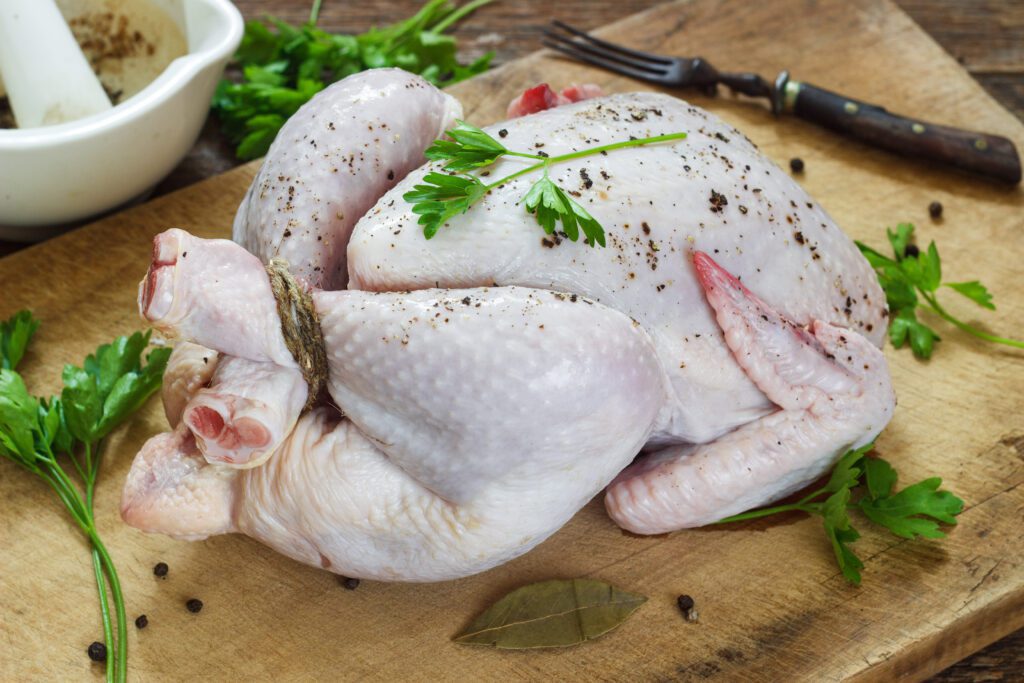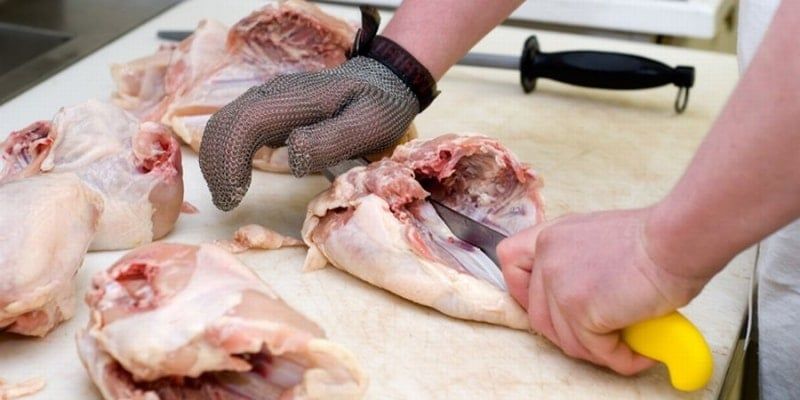Processing poultry at home can seem daunting at first. But with the right steps, it becomes straightforward.
Learning how to process poultry is essential for those who raise their own birds. Freshly processed poultry offers better taste and quality. Also, it ensures that you know exactly where your food comes from. This guide will cover each step clearly.
From preparing your bird to the final clean-up, every detail is included. By the end, you will feel confident in processing your own poultry. Enjoy the satisfaction of doing it yourself. Plus, you’ll appreciate the fresh, healthy meat on your table. Let’s get started on this rewarding journey.

Credit: www.freedomrangerhatchery.com
Setting Up The Workspace
Setting up the workspace is crucial for safe and efficient poultry processing. A well-organized and clean area ensures better workflow. It also helps in maintaining hygiene standards.
Cleaning And Sanitizing
Start by cleaning all surfaces. Use warm, soapy water. Scrub thoroughly to remove any dirt and debris. Rinse and dry the surfaces well. Next, sanitize the area. Use a food-safe sanitizer. Follow the instructions on the label. Make sure to cover all surfaces. This step prevents contamination.
Organizing Tools And Equipment
Place your tools and equipment within easy reach. This saves time and effort. Arrange knives, cutting boards, and containers in an orderly manner. Ensure all tools are clean and sharp. Dull tools can be dangerous. They require more force and can slip easily.
Keep a separate area for waste disposal. This keeps the workspace tidy. It also speeds up the cleanup process. Label containers for different parts of the poultry. This helps in sorting and storing them properly. A well-organized workspace makes the process smoother and safer.
Preparing The Poultry
Preparing the poultry is a crucial step in ensuring a safe and delicious meal.
Removing Feathers
Pluck feathers carefully to avoid damaging the skin.
Cleaning And Gutting
Thoroughly clean and gut the poultry to remove any dirt or impurities.
Processing The Poultry
Processing poultry at home can be a rewarding experience. It ensures fresh and quality meat for your family. This guide will walk you through the steps of cutting and trimming poultry. Let’s dive in!
Cutting Into Parts
Start with a clean workspace and a sharp knife. Place the bird on a cutting board. Begin by removing the wings. Locate the joint between the wing and the body. Cut through the joint with firm pressure. Repeat for the other wing.
Next, cut off the legs. Find the joint between the leg and the body. Use the knife to slice through the joint. Pull the leg away as you cut. This makes the job easier.
Separate the thighs from the drumsticks. Find the joint between the thigh and drumstick. Cut through it smoothly. Now, move to the breast. Cut along one side of the breastbone. Follow the contour of the ribcage. Repeat for the other side. You now have two breast pieces.
Trimming Excess Fat
Trim excess fat to improve the meat’s taste and texture. Place the poultry parts on the cutting board. Look for visible fat. These are usually yellowish lumps or layers.
Use a sharp knife to trim the fat. Hold the knife at a slight angle. Cut away the fat carefully. Avoid removing too much meat. Pay attention to the thighs and breast. These areas often have more fat.
Check the poultry for any leftover skin. Trim away any extra skin. This ensures a better cooking experience. Your poultry is now ready for cooking or storing.

Credit: www.meat-machinery.com
Safety Measures
Ensuring safety during poultry processing is crucial. Proper handling and using the right protective gear can prevent contamination and injuries. This section covers essential safety measures for processing poultry.
Proper Handling Techniques
Proper handling of poultry is critical to maintain hygiene and prevent contamination. Follow these techniques:
- Wash hands thoroughly before and after handling poultry.
- Use separate cutting boards for poultry and other foods.
- Keep raw poultry away from other foods to avoid cross-contamination.
- Store poultry at the right temperature, below 40°F (4°C).
- Ensure all surfaces and utensils are clean before use.
Using Protective Gear
Wearing the right protective gear can prevent injuries and maintain hygiene. Consider the following gear:
- Gloves: Use disposable gloves to handle poultry. Change them frequently.
- Aprons: Wear a clean apron to protect clothing from contamination.
- Hairnets: Use hairnets to prevent hair from falling into the poultry.
- Face masks: Wear face masks to avoid inhaling any dust or particles.
- Safety glasses: Protect your eyes from any splashes or debris.
| Protective Gear | Purpose |
|---|---|
| Gloves | Prevents contamination and protects hands |
| Aprons | Keeps clothing clean |
| Hairnets | Prevents hair from falling into poultry |
| Face masks | Avoids inhaling dust or particles |
| Safety glasses | Protects eyes from splashes or debris |
Storage And Preservation
Proper storage and preservation are essential in poultry processing. Good storage keeps the meat fresh. It also prevents bacterial growth. Follow these tips to ensure your poultry stays safe and delicious.
Refrigeration Tips
Refrigerate poultry at or below 40°F (4°C). This slows bacterial growth. Place poultry in the coldest part of your fridge. Use a sealed container. This prevents cross-contamination. Store raw poultry on the bottom shelf. This stops juices from dripping onto other foods.
Check the temperature regularly. Use a fridge thermometer. Refrigerate cooked poultry within two hours. This keeps it safe to eat. Consume refrigerated poultry within two days. Freshness matters.
Freezing Guidelines
Freeze poultry at 0°F (-18°C) or lower. This halts bacterial growth. Wrap poultry in airtight packaging. Use freezer bags or heavy-duty aluminum foil. Label and date your packages. This helps with rotation and use.
Freeze poultry in small portions. This ensures even freezing. Thaw frozen poultry in the fridge. Never thaw it at room temperature. Use frozen poultry within six months. This keeps the quality high.
Cooking Tips
Cooking poultry can be an enjoyable experience when you know the right tips and tricks. Below are some essential cooking tips to ensure your poultry dishes turn out delicious and flavorful. Follow these guidelines for the best results.
Seasoning Recommendations
Proper seasoning can enhance the taste of your poultry. Here are some recommended seasonings:
- Salt and Pepper: The basics. Always start with these.
- Garlic Powder: Adds a savory depth.
- Paprika: Gives a smoky flavor and vibrant color.
- Herbs: Thyme, rosemary, and sage work well with poultry.
- Lemon Zest: Adds a fresh, tangy note.
Cooking Methods
Different cooking methods can affect the texture and flavor of your poultry. Here are some popular methods:
| Method | Description |
|---|---|
| Grilling | Gives a smoky flavor and crispy skin. Cook over medium heat. |
| Roasting | Great for whole birds. Cook in the oven at 375°F. |
| Sautéing | Quick and easy. Cook pieces in a hot pan with oil. |
| Baking | Suitable for pieces with or without skin. Cook at 350°F. |
| Stewing | Perfect for tougher cuts. Cook slowly in a liquid base. |
Each method brings out different flavors and textures. Choose based on your preference and the dish you are preparing.

Credit: chickenwhisperermagazine.com
Frequently Asked Questions
What Is The First Step In Processing Poultry?
The first step in processing poultry is to ensure the bird is properly cleaned. Remove feathers and thoroughly rinse the bird with cold water.
How Do You Safely Handle Raw Poultry?
Always handle raw poultry with clean hands and utensils. Use separate cutting boards for poultry and other foods to avoid cross-contamination.
What Equipment Is Needed For Poultry Processing?
You will need a sharp knife, cutting board, and poultry shears. An apron and gloves can also help maintain hygiene.
How Should Poultry Be Stored After Processing?
Store processed poultry in the refrigerator at 40°F or below. If not used within two days, freeze it to maintain freshness.
Conclusion
Processing poultry at home can be straightforward and rewarding. Follow the steps carefully. Ensure cleanliness to avoid contamination. Use sharp tools for efficiency and safety. Practice makes perfect, so don’t rush. Proper storage extends freshness and flavor. Share your poultry processing experiences with friends.
Enjoy the fruits of your labor with delicious, home-prepared meals. Happy cooking!





